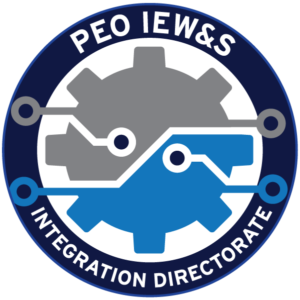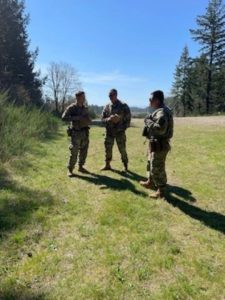By Megan Paice
 When Soldiers are deployed, they don’t always know who to turn to if their equipment needs repair or if it just isn’t worth the rucksack real estate. Maintenance reports get sent if something major happens, but those reports leave other questions unknown. Is the equipment performing to expectations? What improvements would be beneficial? Are Soldiers using it and if not, why? The feedback loop wasn’t getting closed.
When Soldiers are deployed, they don’t always know who to turn to if their equipment needs repair or if it just isn’t worth the rucksack real estate. Maintenance reports get sent if something major happens, but those reports leave other questions unknown. Is the equipment performing to expectations? What improvements would be beneficial? Are Soldiers using it and if not, why? The feedback loop wasn’t getting closed.
The proposed solution originally only had one full time staff member and a couple interns. The solution became what is now known as the PEO’s Integration Directorate customer outreach program, which uses several operational analysts designated as Liaison Officers (LNOs) to close the feedback loop from operational units. Previously, project managers within Program Executive Office-Intelligence, Electronic Warfare & Sensors (PEO IEW&S) may not receive critical feedback until it was too late to act on, to shape, or redirect the development of a program.
Paul Terzulli, deputy director for the PEO IEW&S Integration Directorate, is the first-line lead for the liaison program and day-to-day operations. He works closely with the LNOs and understands why they are critical to the Soldier.
“LNOs are critical to the success of the PEO IEW&S’ mission and the Army warfighting functions that we support because they enable tighter and more impactful collaboration with the operational Army. They deliver rapid and ongoing awareness of current and emerging needs of the units and Soldiers we directly support. Through the LNO program, we can collect actionable information and develop partnerships directly with the operational Army units that we have the mission to equip,” he said.
Bill Reagan, XVIII Airborne Corps and SOF LNO, explains that while the LNOs are closing the feedback loop, there are still challenges that need to be tackled. First, many Soldiers don’t know about or what the PEO does, so this can lead to confusion. Instead of being viewed as a liaison, at times LNOs are seen as vendors only trying to sell a product.
“It takes a little bit to build that relationship, but then, once they know what we can leverage to help them, they are inevitably super cooperative and provide us a great insight into not only the organization but the technology as well.”
Gualberto “Tato” Marrero is another LNO who supports I Corps and the United States Army Pacific (USARPAC) at Fort Shafter, Hawaii. He has also covered Alaska and the 11th Airborne Division and other operational units there. More recently, Marrero has been the ‘touch point’ for the TRADOC Centers of Excellences, specifically the LNO stationed at Fort Huachuca with the Intelligence CoE. and Fires Center of Excellence at Fort Sill, OK. Much of his day-to-day consists of meetings via Army 365; however, he often travels and observes different Soldier Touchpoints (STPs) and military experimentations and exercises to gain feedback.
Marrero started in the PEO IEW&S Fellowship Program as a soldier assigned to a program when Reagan reached out mid-2020 to see if he would be interested in helping build this team. A total of four worked in the LNO Integration Directorate. Three fellows (retiring Soldiers) have since transitioned as permanent team members after their six+ months internship. Other teammates include Donald “Ray” Porter III CORPS Fort Cavazos, Texas (formerly known as Fort Hood); Russ Nadler V CORPS, Germany. Two additional LNOs work with the Directorate but not directly on the team: James Hust, Intelligence Center of Excellence (ICoE) Fort Huachuca, AZ; and Julia Ruck Cyber Center of Excellence CCoE, Fort Eisenhower (formerly Fort Gordon).
“I really think he’s [Marrero] the exemplar. Not only because of his military intelligence expertise his experience in uniform speaks volumes to this organization. When he was in uniform, he didn’t know that this PEO existed,” Reagan said.
This directly leads back to how Marrero builds rapport with his units. “What I tell most of the people I deal with is when you see me coming through the door, unlike a vendor, I’m not trying to sell you a capability. You could do whatever you want to do for experimentation, but when I show up, I bring you programs of record and the Army is telling you this is going be your piece of equipment whether you like it or not. Our selling point to them is,
‘if you want a say on how that piece of equipment is used or how it’s being developed, you want to send your best and brightest to the Soldier Touchpoints because only then, can we make those changes necessary to fit what you guys need.”
He also has a different perspective on what questions to ask or what outside elements could impact how the equipment works. For example, one weapon may work well in a warmer climate but not well in freezing climate, so he has learned that there is some tailoring that comes with each unit and which units should be engaged.
“After 20 years of being a military intelligence officer, the most frustrating thing is getting brand new piece of equipment, but it has the exact same issues I had with my old piece of equipment. Eventually, we stop implementing the new stuff and write it off.”
 The LNOs are seen as a gamechanger for PEO IEW&S in equipping modernization missions for Army 2030 by enabling programs across the PEO to move faster, identify risks and mitigations sooner and more rapidly adapt to the needs of the force. This is also a critical component to rapid acquisition, to include rapid prototyping and rapid fielding. Without this critical collaboration enabled through the LNOs, programs are not able to achieve the velocity needed to achieve the modernization goals of Army 2030.
The LNOs are seen as a gamechanger for PEO IEW&S in equipping modernization missions for Army 2030 by enabling programs across the PEO to move faster, identify risks and mitigations sooner and more rapidly adapt to the needs of the force. This is also a critical component to rapid acquisition, to include rapid prototyping and rapid fielding. Without this critical collaboration enabled through the LNOs, programs are not able to achieve the velocity needed to achieve the modernization goals of Army 2030.
In the future, the team envisions that they will leverage technology to further increase the impact of the LNO program. They are implementing Customer Relationship Management (CRM) technologies now so they can begin the process of automating and digitizing the manual field collection processes currently in place. Once the process has been fully digitized, the LNO team will be able to move and enable system development at an even faster pace, further enabling the PEO to meet the needs of the Army in both deliver the Army of 2030 and design the Army of 2040.
Learn more about PEO IEW&S by clicking here or following our social media on Facebook and LinkedIn!

